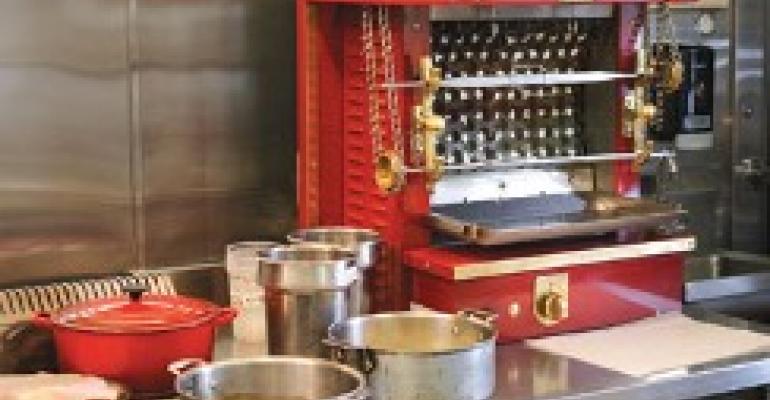Propelled by a cutting-edge cooking battery and a remodeled workspace, the new kitchen of Paley’s Place Bistro & Bar in Portland, Ore., is poised for 10 more years of culinary creativity, said chef-owner Vitaly Paley.
The new space, which Paley called “the kitchen of my dreams,” is far more comfortable and productive than the cramped 400-square-foot area he formerly inhabited. Like many first-time owners on a budget, he made do with equipment inherited from previous owners. He and his wife, Kimberly, opened the fine-dining restaurant, with its cozy 50-seat dining room, in a picturesque early-1900s-era Victorian home 13 years ago.
However, as his stature grew—he received the 2005 James Beard Foundation Best Chef Pacific Northwest award—and the business flourished, the equipment was pushed to its limits. Paley credited his crew with working “on sheer enthusiasm” in the crowded, hot and overtaxed kitchen.
“We upgraded over the years, but never looked at the kitchen as a place where organization, flow and efficiency mattered,” Paley said. “We just needed equipment and more of it.”
It became increasingly apparent that the kitchen needed major improvements: ovens and burners with greater firepower, more work space, a streamlined traffic flow and a better ventilation hood. Aged walls, ceiling and floors needed to be replaced as well. Still, inside the elegant dining room, the widely acclaimed Pacific Northwest regional cuisine gave no hint of the challenges in the back-of-the-house.
In February, Paley closed the restaurant for 10 days to gut the kitchen and replace its plumbing, electrical, flooring, walls and ceiling, as well as to install a new hood and cooking battery.
Equipment designer Steve Rose of Rose’s Equipment in Portland was key in helping Paley fit in the equipment he desired. Because the tight 400-square-foot footprint was a given, “we counted inches for just about everything,” Paley said.
Rose recalled his first view of the old kitchen during service.
“It was amazing what those people were doing,” Rose said. “Nothing gelled. The dishwasher, the cooks, waiters—everyone was crossing into each other’s space.”
His changes included moving the hot line 90 degrees, freeing space for a chef’s station for prep work and plating and extending the cooking line. He rearranged equipment so people no longer had to walk through a maze. He also installed a properly ventilating hood for a cooler environment.
Rose also sourced special equipment not available in Portland, like a 32-inch French-made Molteni gas rotisserie with rotating horizontal and vertical spits, a piece Paley was familiar with from working in France.
“The rotisserie is one of those old-fashioned items that are coming back,” said Paley, who has cooked items like quail, rabbit, lamb, pork belly and leg of pork on it.
Another key piece is a 24-inch Jade Range plancha, a flat, direct-contact cooking surface that resembles a breakfast griddle. It is actually a thick, heavy metal sheet heated from below by a high-temperature burner. Heat radiates out from the center, creating multiple temperature zones. Cooking is controlled by moving the food to different places on the surface. Paley observed that the ultrahot plancha crisps foods so well that it is no longer necessary to coat fish in flour before sautéing. It’s also well suited for fast, precise, quantity cooking.
“We’re able to pick up six or seven orders of fish at the same time with vegetables and garnishes,” he said.
Happily ensconced in his dream kitchen, Paley hopes the outcome would be renewed culinary inspiration.
“We want to keep pushing the envelope and showing people that they don’t have to go to New York or San Francisco for serious food,” he said.

